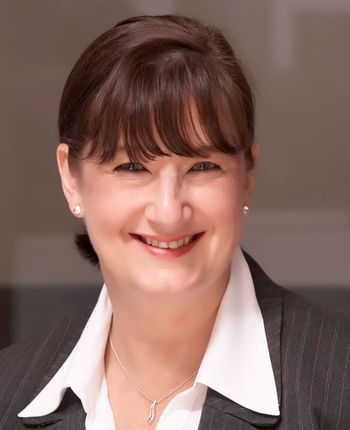
Experts pitch policies to enhance patient care in primary care, oncology
Key Takeaways
- Improved collaboration between primary care and oncology is essential for better patient outcomes, with emphasis on communication and policy reform.
- Social context, including family involvement, is crucial in cancer care, requiring communication with supportive teams like dietitians and counselors.
National Comprehensive Cancer Network holds policy summit on collaboration in oncology, primary care.
New
Six health care experts had a broad discussion of the American health care landscape and the people and medicine at the intersections of
The daylong summit’s second panel discussion was “The Role of Public Policy in Facilitating Primary Care and Oncology Partnerships.” The group spent more than an hour discussing successful and problematic parts of the health care system, and how primary care physicians (PCPs) and oncologists could better use or change them to help each other, other clinicians, and patients.
It’s no small task.
“I, for one, thought, well, gosh, of course PCPs ought to communicate with oncologists. It’s obvious, no big deal,” said group moderator Clifford Goodman, PhD, a consultant on health care technology and policy. “But I think, I know I’ve learned and found out today, it is much more complex than I could have ever imagined and the challenges are just blatantly obvious.”
There is upside: The groups came up with some ways to get around the challenges, even overcome them, Goodman said. But the conference took place in Washington, D.C., and Goodman said the nation’s capital has become a tough environment in which to make those happen.
Working together
There are ways to improve the situation. Discussion started with Larissa Nekhlyudov, MD, MPH, a primary care physician and professor of medicine at Harvard Medical School.She practices at Brigham & Women’s Hospital in Boston and is clinical director of internal medicine for cancer survivors at the Dana-Farber Cancer Institute.
- At the state level, states have cancer societies and internal medicine societies that could develop programs together. An example: In Massachusetts, advocates developed a program on cancer survivorship. It is a one-hour continuing medical education credit that has been viewed by 600 physicians.
- The U.S. Centers for Disease Control and Prevention has funded
Project ECHOs , short for Extension for Community Healthcare Outcomes. Those could be used to educate primary care physicians and create dialogue for PCPs and oncologists to meet online. - At the national level, the National Cancer Institute recognizes Designated Cancer Centers, but there is nothing in its standards requiring research, engagement or any connection with primary care. That could change to at least inquire about what cancer centers are doing to engage with primary care.
Social context: Community and family
Physicians must focus on communication, not just between PCPs and oncologists, said David O. Garcia, PhD, FACSM, associate professor in the Mel and Enid Zuckerman College of Public Health at the University of Arizona. Cancer care requires communication with supportive teams including dietitians and behavioral counselors. Just as important is “the social context of the lived experience” that includes family, he said.
“The caregiver — so, when you get cancer, or you know somebody that has cancer, it’s not just the individual with cancer,” Garcia said. “It is the entire household, right? And we often forget about those other individuals who are also affected with comorbid conditions, who also need to be treated for hypertension, diabetes, who also have the stress potentially of a recurrence or so forth.”
Navigation billing codes
Under the Cancer Moonshot of the administration of President Joe Biden, the American Medical Association released a current procedural terminology (CPT) codes for billing for oncology navigation services.
“It’s a great step in the right direction,” said Candice Roth, MSN, RN, CENP, executive director of AONN+, the Academy of Oncology Nurse & Patient Navigators. Those acknowledge the services provided, and that is step one. But there still are challenges in lack of reimbursement, eligibility requirements to bill for those services, and lack of specificity to show return on investment for those navigation services, she said.
“If you can't sort of attach a metric to or connect it to a particular act of, or responsibility of, a navigator, it's not going to show up in your system?” Goodman said.
“Correct,” Roth said.
“And then it's hard to value it appropriately, correct?” he said.
“Exactly,” she said.
Value of primary care
Value is at the heart of a problem for primary care in the American health care system at large, said Stephanie Quinn, senior vice president of external affairs and practice experience for the American Academy of Family Physicians.
“I think just the construct of how health care is financed really runs counter to the goals of primary care,” she said. “The secret sauce of primary care is keeping people healthy and population health, and our financing system is based on encounters and things happening, interventions. And in some cases that’s right and appropriate.”
But in the fee-for-service environment with units of time and services, it becomes very difficult to finance the staff and technology that PCPs need to manage a population of patients, Quinn said.
“And then it gets to your point: How do you begin to demonstrate that, you know, that these things have value? How do you value something that didn't happen because of your work?” Quinn said. “Capturing a non-event is very difficult, and so when we look at our payment system, primary care has been disadvantaged by that, and I'm not talking just about money in pockets. I'm talking about the ability to have stable revenue to get the resources to appropriately manage their patients.”
A health care victory
The billing codes for patient navigation were a step in Biden’s Cancer Moonshot, which had two goals, said Asal Sayas, a former senior advisor on the health outcomes team in the White House Office of Science and Technology Policy. There were two goals: reduce the age-adjusted cancer death rate by 50% over 25 years to save 4 million lives by 2047; and to improve the experience of those diagnosed and living with cancer and beyond cancer into survivorship, Sayas said.
The president made it a priority to establish reimbursement for navigation services, and in 2024, the six insurance billing codes were created.
“So that was a first step. Obviously, there's still a lot of work to be done, but we all know that navigation improves health outcomes, saves … cost to our health care system and also addresses disparities, particularly in cancer care, where we see disparities exasperated,” Sayas said. “And so, while that's not a challenge, that was an example of something we could do successfully.”
The challenge lies with coordinating with Congress to enact laws because it is up to Congress to pass legislation that creates policy, she said. To do that, it takes physicians, patients, and champions in Congress.
Cancer affects every American family, so there are a lot of members of both sides of the aisle that are personally affected or really care about the issue, and there’s no doubt constituents also care about it, Sayas said.
Related coverage:
Newsletter
Stay informed and empowered with Medical Economics enewsletter, delivering expert insights, financial strategies, practice management tips and technology trends — tailored for today’s physicians.








